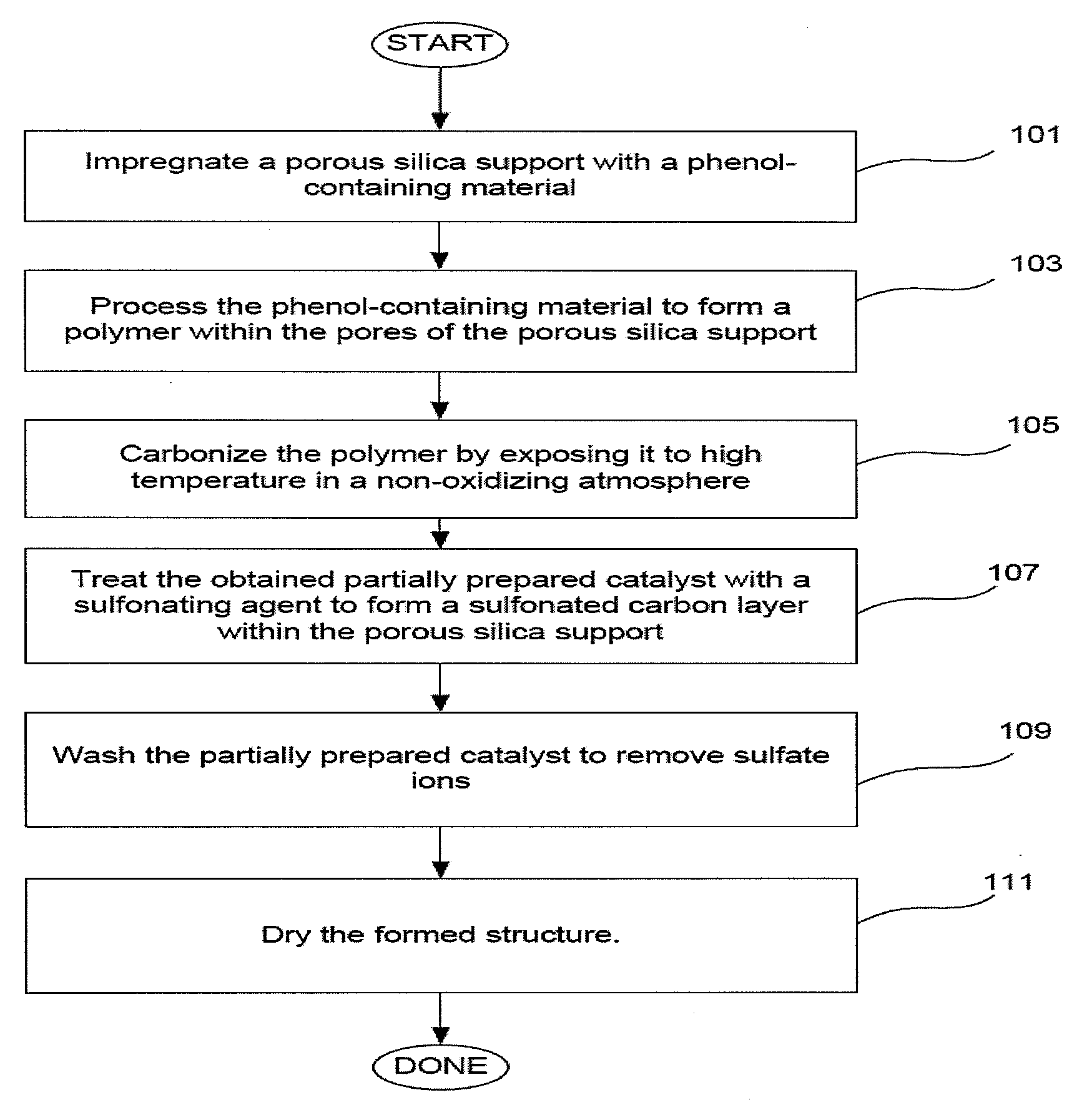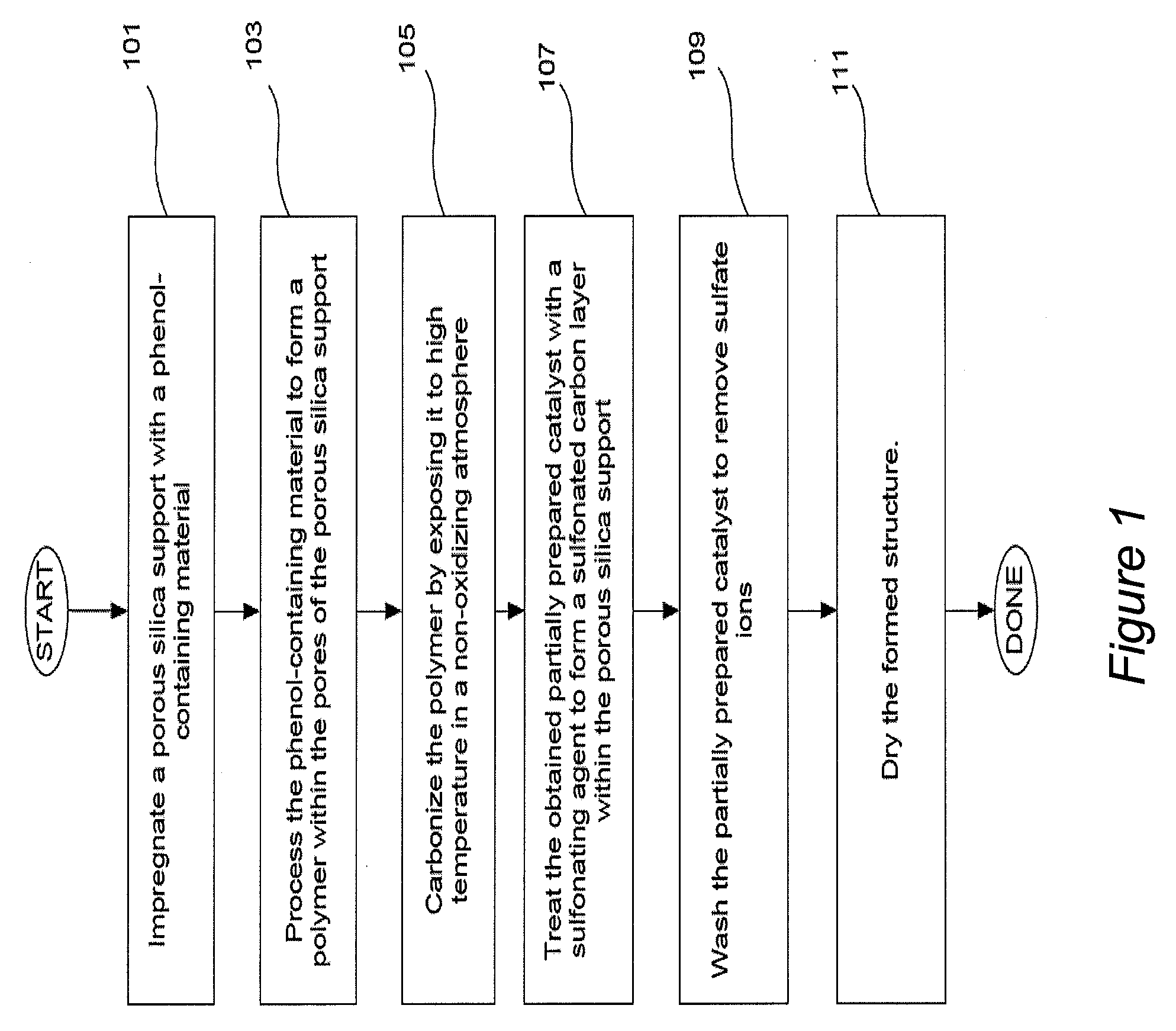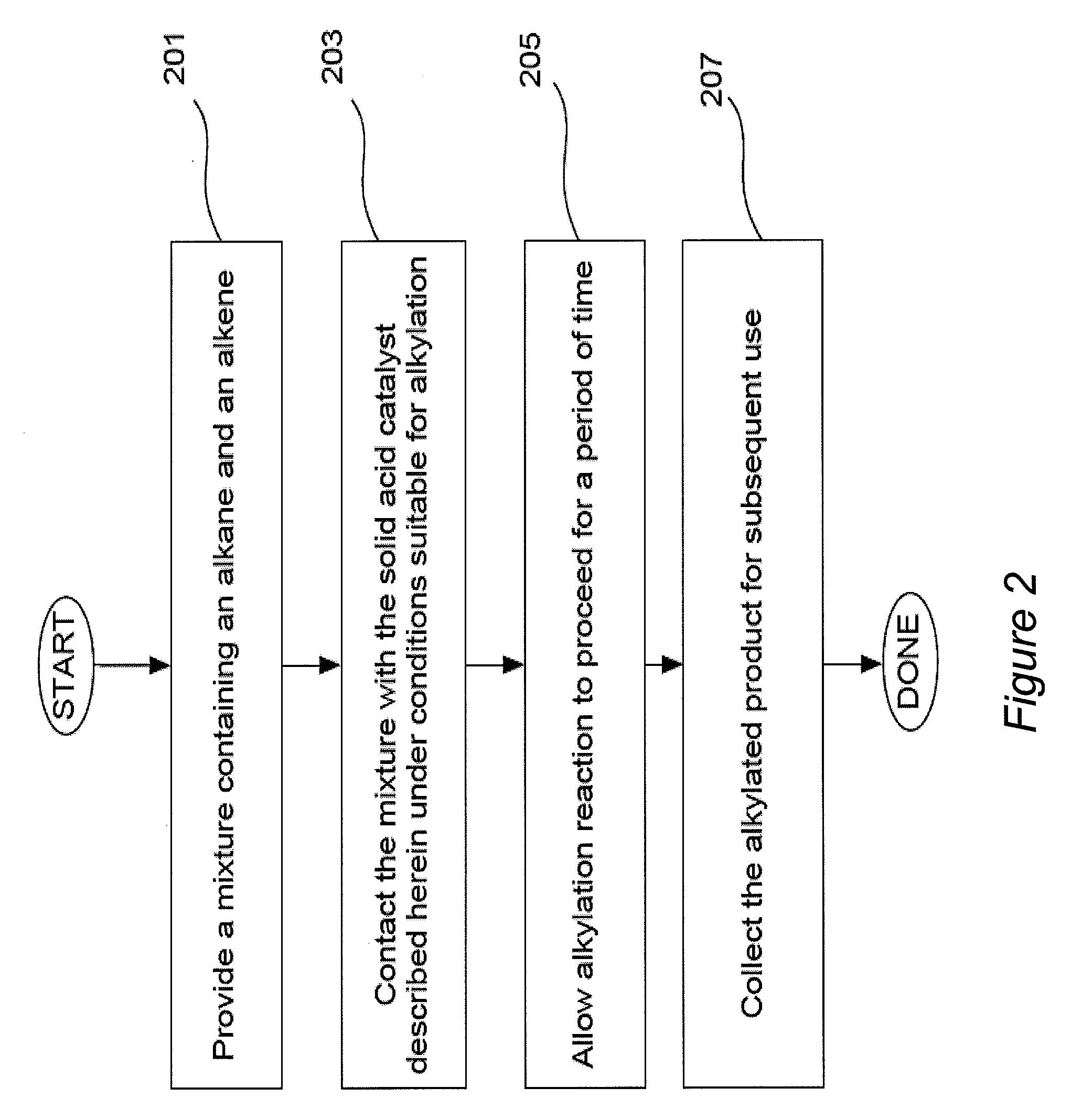Solid acid catalyst
a catalyst and solid acid technology, applied in the field of solid acid catalysts, can solve the problems of poor mechanical properties, low thermal stability of acid resins, and insufficient activity and stability of these catalysts for commercial use, and achieve the effects of high thermal stability, large surface area, and high concentration of acidic sites
- Summary
- Abstract
- Description
- Claims
- Application Information
AI Technical Summary
Benefits of technology
Problems solved by technology
Method used
Image
Examples
examples
[0148]Four solid acid catalysts in accordance with embodiments described herein were prepared and were tested in an esterification reaction. Commercially available SAC-13 catalyst, prepared WO3 / ZrO2 catalyst, and prepared glucose-based sulfonated carbon were used as comparative examples.
Preparation of Catalyst 1
[0149]1.58 g of Dow Novolac epoxy resin DEN 438-A85 (partially polymerized phenol-formaldehyde resin) was mixed with 0.16 ml ethyl acetate (EA). This solution was then mixed with 0.075 ml of 65 wt % solution 2-ethyl-4-methylimidazole (EMI) in ethyl acetate. Next, 1 g of Water Resistant Silica Gel (available from SilicaStar Industries, Fremont, Calif.) was added to the solution. Material was mixed thoroughly and was left for 30 min.
[0150]Next, a vial with formed material was placed into tubular oven and was heated under nitrogen flow according to flowing program: 3 minutes heating to 120° C., temperature hold for 2 hr, 5 minutes heating to 400° C., temperature hold for 4 hrs. ...
PUM
| Property | Measurement | Unit |
|---|---|---|
| temperatures | aaaaa | aaaaa |
| temperature | aaaaa | aaaaa |
| weight % | aaaaa | aaaaa |
Abstract
Description
Claims
Application Information
 Login to View More
Login to View More - R&D
- Intellectual Property
- Life Sciences
- Materials
- Tech Scout
- Unparalleled Data Quality
- Higher Quality Content
- 60% Fewer Hallucinations
Browse by: Latest US Patents, China's latest patents, Technical Efficacy Thesaurus, Application Domain, Technology Topic, Popular Technical Reports.
© 2025 PatSnap. All rights reserved.Legal|Privacy policy|Modern Slavery Act Transparency Statement|Sitemap|About US| Contact US: help@patsnap.com



